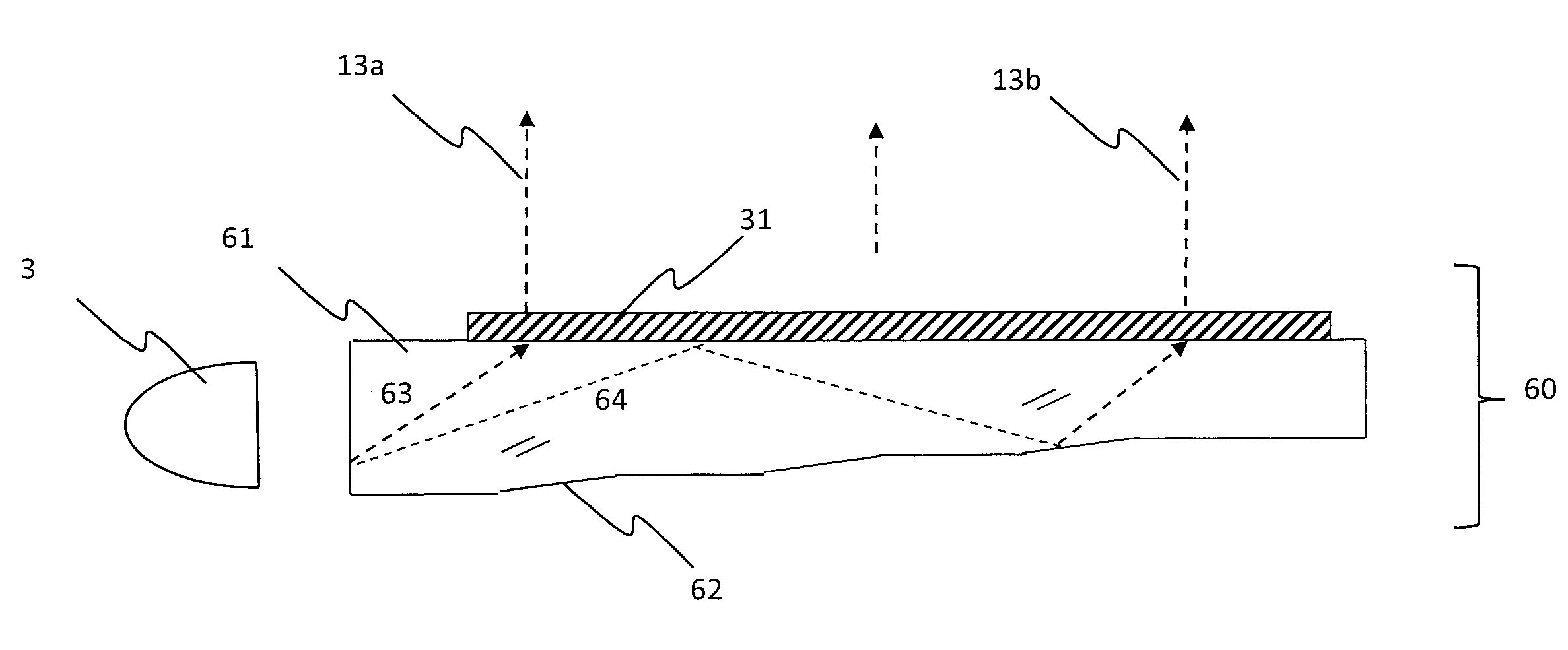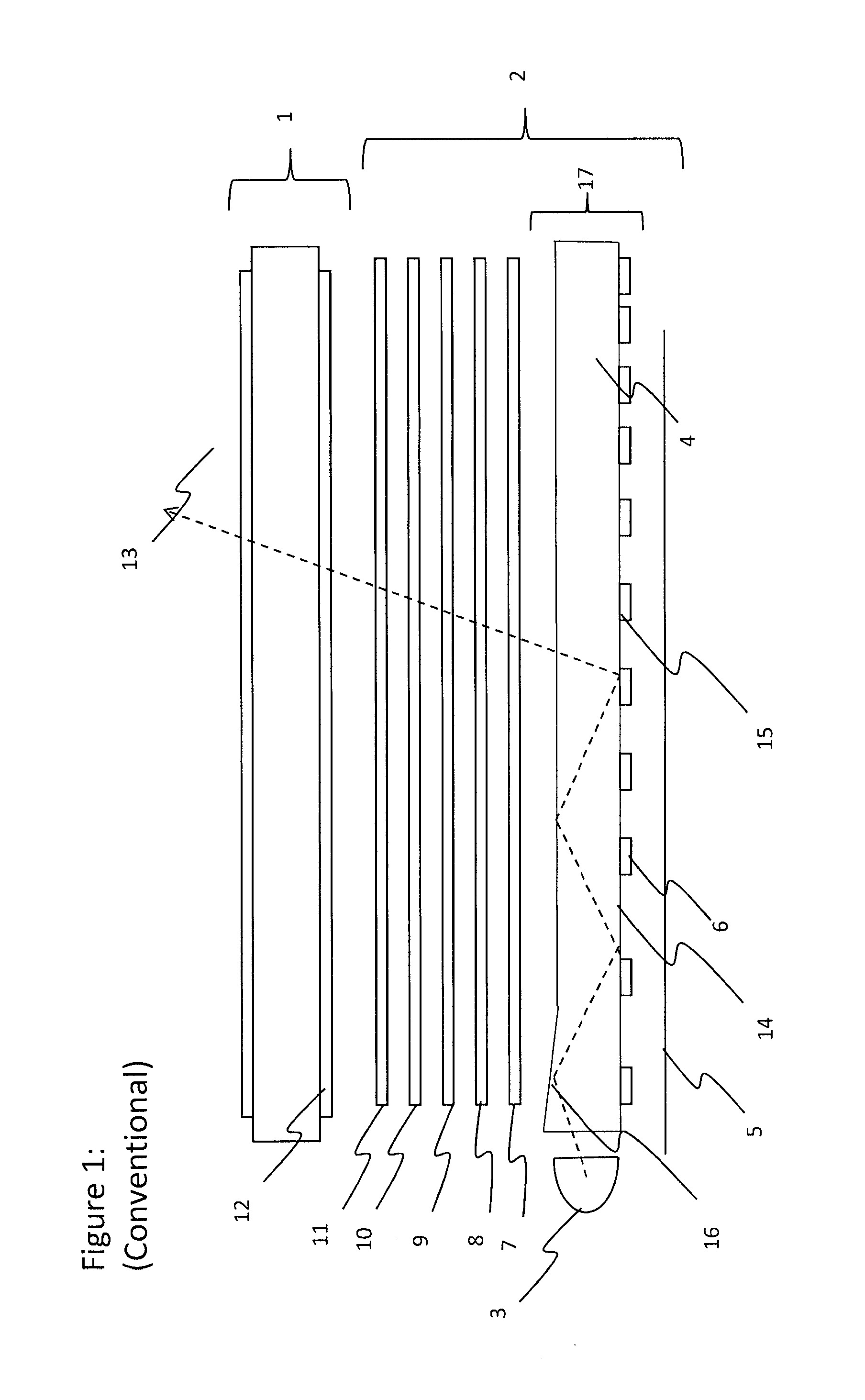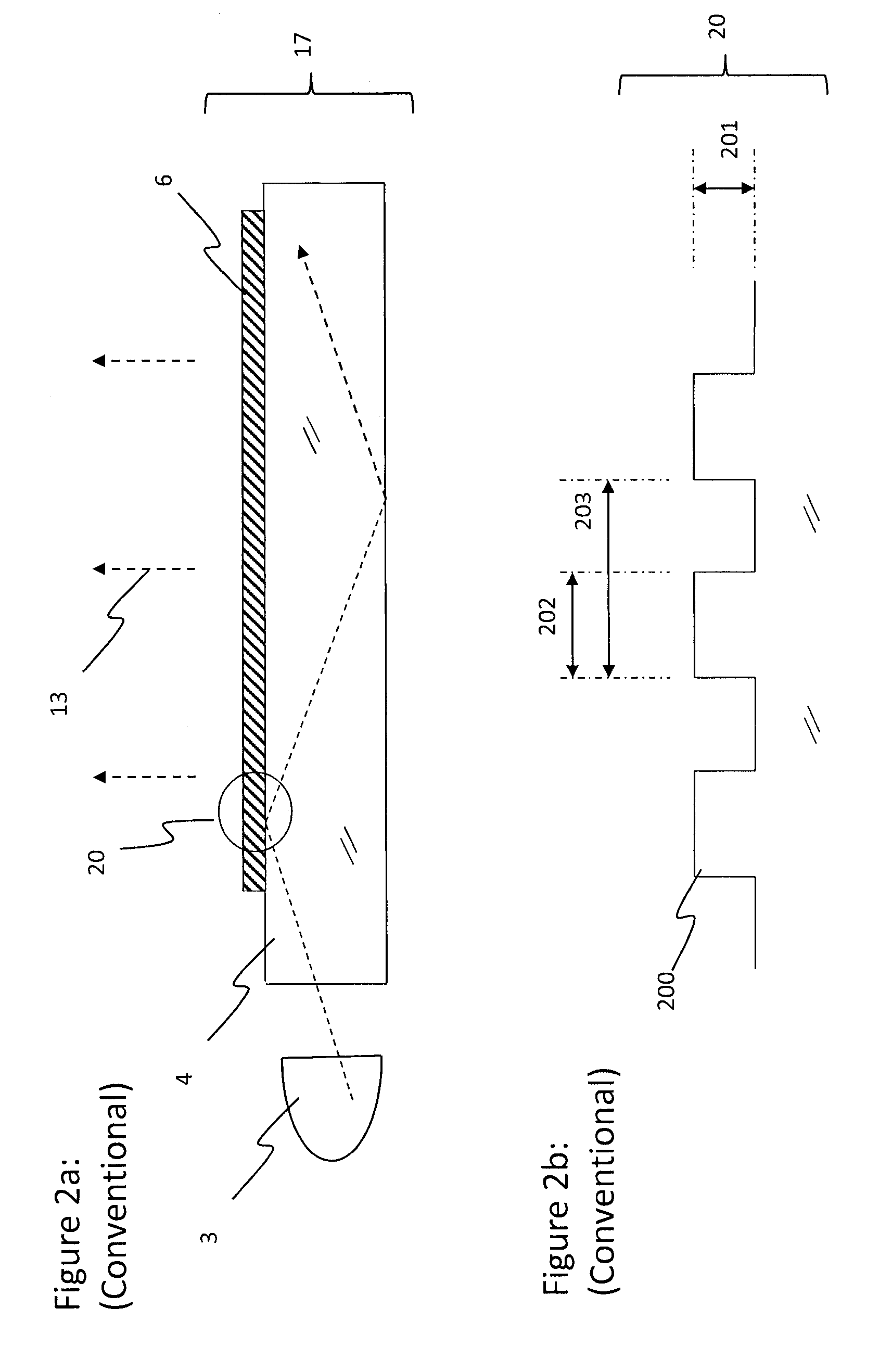Uniform diffractive backlight
a backlight and diffractive technology, applied in the field of backlights, can solve the problems of introducing substantial non-uniformity, inefficiency of reflection and a second pass of light, and low efficiency of extraction, so as to improve the efficiency of light extraction and maintain the uniformity of extracted ligh
- Summary
- Abstract
- Description
- Claims
- Application Information
AI Technical Summary
Benefits of technology
Problems solved by technology
Method used
Image
Examples
Embodiment Construction
[0049]The present invention will now be described in detail with reference to the drawings, in which like reference numerals are used to refer to like elements throughout.
[0050]FIG. 1 illustrates a conventional small area liquid crystal display. The display includes a liquid crystal display panel 1 and a backlight unit 2. A white light source 3, which can be a fluorescent tube, a LED with phosphor, RGB LED group, a laser or other light source, is positioned to inject light into the edge of a thin lightguide 4. The lightguide 4 is designed to transfer by total internal reflection (TIR) 14 the light across the area of the display. The lightguide 4 may have a taper 16 on one of the larger sides near the light sources to allow a thinner lightguide. At least one large face, which can be the top, bottom (illustrated) or both faces, has features 6 that disrupt the TIR 14 in the lightguide so that the light 13 leaves the lightguide. The light that leaves the lightguide generally has the wro...
PUM
| Property | Measurement | Unit |
|---|---|---|
| size | aaaaa | aaaaa |
| height | aaaaa | aaaaa |
| width | aaaaa | aaaaa |
Abstract
Description
Claims
Application Information
 Login to View More
Login to View More - R&D
- Intellectual Property
- Life Sciences
- Materials
- Tech Scout
- Unparalleled Data Quality
- Higher Quality Content
- 60% Fewer Hallucinations
Browse by: Latest US Patents, China's latest patents, Technical Efficacy Thesaurus, Application Domain, Technology Topic, Popular Technical Reports.
© 2025 PatSnap. All rights reserved.Legal|Privacy policy|Modern Slavery Act Transparency Statement|Sitemap|About US| Contact US: help@patsnap.com



